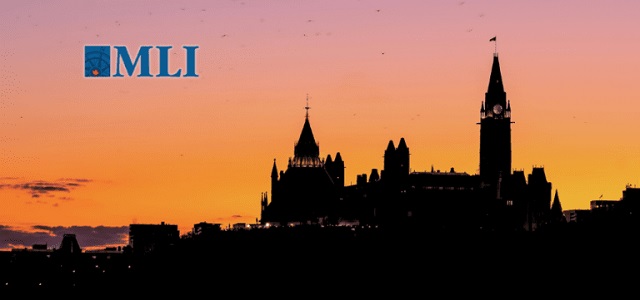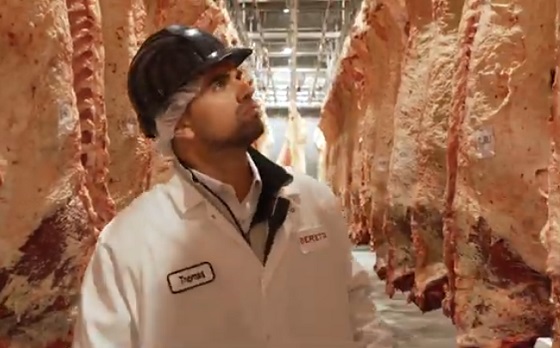Food
The Trudeau government’s latest assault on transparency is buried in Bill C-69

From the Macdonald Laurier Institute
By Aaron Wudrick for Inside Policy
The new powers granted to the minister of health under Bill C-69 are considerable. For example, they allow the minister to unilaterally make decisions regarding drug approvals and food safety regulations, effectively pulling products off the shelves of stores without the typical procedural safeguards. This concentration of power in the hands of the minister circumvents much-needed scrutiny and risks politicizing health decisions.
As the Trudeau government scrambles to pass its spring 2024 budget measures through Parliament before the summer recess, most of the media’s focus has centred on the budget’s headline measure, the increase in the capital gains inclusion rate. Unusually, Finance Minister Chrystia Freeland chose not to include that change in its main budget bill, saying she would instead soon introduce those measures in a separate bill.
Meanwhile, the remainder of the budget measures are contained in Bill C-69, an omnibus bill that has attracted little media attention. That is a shame, as it contains provisions that warrant closer scrutiny, particularly the proposed changes to the Food and Drug Act. These amendments grant the minister of health sweeping powers, exacerbating the Trudeau government’s longstanding habit of undermining proper procedural channels when it finds them to be inconvenient.
The new powers granted to the minister of health under Bill C-69 are considerable. For example, they allow the minister to unilaterally make decisions regarding drug approvals and food safety regulations, effectively pulling products off the shelves of stores without the typical procedural safeguards. This concentration of power in the hands of the minister circumvents much-needed scrutiny and risks politicizing health decisions. It is not hard to see how such authority could easily lead to arbitrary or politically motivated actions, further diminishing public trust in a health system battered by the COVID-19 pandemic.
Health Minister Mark Holland defends these new powers by arguing that they are necessary for protecting public health swiftly and effectively and suggests that only a “dishonest” minister would misuse such powers. He fails to mention that governance should not rely solely on the personal integrity of individual ministers but on robust, transparent processes that ensure accountability. It is concerning that Holland advocates bypassing established departmental procedures, which raises questions about the motivations behind these proposed changes.
A more appropriate regulatory approach would trust independent agencies, including Health Canada, to oversee the safety of health products. Establishing clear guidelines and procedures for evaluating and removing unsafe products would ensure consistency, fairness, and transparency in decision-making processes.
Unfortunately, this approach contrasts sharply with the Trudeau government’s preference for consolidating power and limiting oversight.
For instance, the Trudeau government has been criticized for its use of secret orders-in-council, which bypass public scrutiny and reduce transparency. These orders often contain sensitive decisions that the government simply prefers to keep out of the public eye.
The government has also allowed the federal access to information system to atrophy, with frequent delays and heavily redacted documents further undermining the principle of open government.
In 2017, the Trudeau government introduced changes that critics argued would limit the independence and effectiveness of the Parliamentary Budget Officer (PBO). These amendments allowed the government to control the PBO’s work plan and staffing, potentially reducing its ability to hold the government accountable. More recently, the government cut the budget of the Information Commissioner’s office, undermining the capacity of an already overwhelmed independent officer of Parliament to hold the government to account, with the commissioner herself noting that “this reduction in my budget will spell long delays for complainants who are seeking information from government institutions.”
Further examples of this troubling trend include the government’s proposal in the early days of the COVID-19 pandemic that sought to grant the government extraordinary powers to tax and spend unilaterally – without parliamentary approval – for almost two years. Later in the pandemic, the government faced significant criticism from Auditor General Karen Hogan for the lack of transparency and accountability regarding the allocation and spending of tens of billions in relief funds: “I am concerned about the lack of rigour on post-payment verifications and collection activities,” Hogan said in 2022.
Taken together, a clear pattern emerges of a government that regularly seeks to undermine transparency, limit oversight, and concentrate power within the executive branch, and Bill C-69 is just the latest attempt.
The government should back off and drop these proposed new unilateral ministerial powers. Strong regulatory oversight, coupled with transparency and accountability, won’t impair the government’s ability to regulate health products – all while safeguarding democratic principles and public trust.
Aaron Wudrick is the Director of the Domestic Policy Program at the Macdonald-Laurier Institute.
Agriculture
Lacombe meat processor scores $1.2 million dollar provincial tax credit to help expansion

Alberta’s government continues to attract investment and grow the provincial economy.
The province’s inviting and tax-friendly business environment, and abundant agricultural resources, make it one of North America’s best places to do business. In addition, the Agri-Processing Investment Tax Credit helps attract investment that will further diversify Alberta’s agriculture industry.
Beretta Farms is the most recent company to qualify for the tax credit by expanding its existing facility with the potential to significantly increase production capacity. It invested more than $10.9 million in the project that is expected to increase the plant’s processing capacity from 29,583 to 44,688 head of cattle per year. Eleven new employees were hired after the expansion and the company plans to hire ten more. Through the Agri-Processing Investment Tax Credit, Alberta’s government has issued Beretta Farms a tax credit of $1,228,735.
“The Agri-Processing Investment Tax Credit is building on Alberta’s existing competitive advantages for agri-food companies and the primary producers that supply them. This facility expansion will allow Beretta Farms to increase production capacity, which means more Alberta beef across the country, and around the world.”
“This expansion by Beretta Farms is great news for Lacombe and central Alberta. It not only supports local job creation and economic growth but also strengthens Alberta’s global reputation for producing high-quality meat products. I’m proud to see our government supporting agricultural innovation and investment right here in our community.”
The tax credit provides a 12 per cent non-refundable, non-transferable tax credit when businesses invest $10 million or more in a project to build or expand a value-added agri-processing facility in Alberta. The program is open to any food manufacturers and bio processors that add value to commodities like grains or meat or turn agricultural byproducts into new consumer or industrial goods.
Beretta Farms’ facility in Lacombe is a federally registered, European Union-approved harvesting and meat processing facility specializing in the slaughter, processing, packaging and distribution of Canadian and United States cattle and bison meat products to 87 countries worldwide.
“Our recent plant expansion project at our facility in Lacombe has allowed us to increase our processing capacities and add more job opportunities in the central Alberta area. With the support and recognition from the Government of Alberta’s tax credit program, we feel we are in a better position to continue our success and have the confidence to grow our meat brands into the future.”
Alberta’s agri-processing sector is the second-largest manufacturing industry in the province and meat processing plays an important role in the sector, generating millions in annual economic impact and creating thousands of jobs. Alberta continues to be an attractive place for agricultural investment due to its agricultural resources, one of the lowest tax rates in North America, a business-friendly environment and a robust transportation network to connect with international markets.
Quick facts
- Since 2023, there are 16 applicants to the Agri-Processing Investment Tax Credit for projects worth about $1.6 billion total in new investment in Alberta’s agri-processing sector.
- To date, 13 projects have received conditional approval under the program.
- Each applicant must submit progress reports, then apply for a tax credit certificate when the project is complete.
- Beretta Farms has expanded the Lacombe facility by 10,000 square feet to include new warehousing, cooler space and an office building.
- This project has the potential to increase production capacity by 50 per cent, thereby facilitating entry into more European markets.
Related information
Agriculture
Canada’s supply management system is failing consumers

This article supplied by Troy Media.
The supply management system is cracking. With imports climbing, strict quotas in place and Bill C202 on the table, we’re struggling to feed ourselves
Canada’s supply management system, once seen as a pillar of food security and agricultural self-sufficiency, is failing at its most basic function:
ensuring a reliable domestic supply.
According to the Canadian Association of Regulated Importers, Canada imported more than 66.9 million kilograms of chicken as of June 14, a 54.6 per cent increase from the same period last year. That’s enough to feed 3.4 million Canadians for a full year based on average poultry consumption—roughly 446 million meals. Under a tightly managed quota system, those meals were supposed to be produced domestically. Instead imports now account for more than 12 per cent of this year’s domestic chicken production, revealing a growing dependence on foreign supply.
Supply management is Canada’s system for regulating dairy, poultry and egg production. It uses quotas and fixed prices to match domestic supply with demand while limiting imports, intended to protect farmers from global price swings and ensure stable supply.
To be fair, the avian influenza outbreak has disrupted poultry production and partially explains the shortfall. But even with that disruption, the numbers are staggering. Imports under trade quotas set by the World Trade Organization, the Canada-United States Mexico Agreement and the Comprehensive and Progressive Agreement for Trans-Pacific Partnership are running at or near their allowable monthly share—known as pro-rata
levels—signalling not just opportunity, but urgency. Supplementary import permits, meant to be used only in emergencies, have already surpassed 48 million kilograms, exceeding total annual import volumes in some previous years. This isn’t a seasonal hiccup. It’s a systemic failure.
The system, designed to buffer domestic markets from global volatility, is cracking under internal strain. When emergency imports become routine, we have to ask: what exactly is being managed?
Canada’s most recent regulated chicken production cycle, which ended May 31, saw one of the worst shortfalls in over 50 years. Strict quota limits stopped farmers from producing more to meet demand, leaving consumers with higher grocery bills and more imported food, shaking public confidence in the system.
Some defenders insist this is an isolated event. It’s not. For the second straight week, Canada has hit pro-rata import levels across all chicken categories. Bone-in and processed poultry, once minor players in emergency import programs, are now essential just to keep shelves stocked.
And the dysfunction doesn’t stop at chicken. Egg imports under the shortage allocation program have already topped 14 million dozen, a 104 per cent jump from last year. Not long ago, Canadians were mocking high U.S. egg prices. Now theirs have fallen. Ours haven’t.
All this in a country with $30 billion in quota value, supposedly designed to protect domestic production and reduce reliance on imports. Instead, we’re importing more and paying more.
Rather than addressing these failures, Ottawa is looking to entrench them. Bill C202, now before the Senate, seeks to shield supply management from future trade talks, making reform even harder. So we must ask: is this really what we’re protecting?
Meanwhile, our trading partners are taking full advantage. Chile, for instance, has increased chicken exports to Canada by more than 63 per cent, now accounting for nearly 96 per cent of CPTPP-origin imports. While Canada doubles down on protectionism, others are gaining long-term footholds in our market.
It’s time to face the facts. Supply management no longer guarantees supply. When a system meant to ensure resilience becomes a source of fragility, it’s no longer an asset—it’s an economic liability.
Dr. Sylvain Charlebois is a Canadian professor and researcher in food distribution and policy. He is senior director of the Agri-Food Analytics Lab at Dalhousie University and co-host of The Food Professor Podcast. He is frequently cited in the media for his insights on food prices, agricultural trends, and the global food supply chain.
Troy Media empowers Canadian community news outlets by providing independent, insightful analysis and commentary. Our mission is to support local media in helping Canadians stay informed and engaged by delivering reliable content that strengthens community connections and deepens understanding across the country.
-

 Agriculture2 days ago
Agriculture2 days agoCanada’s supply management system is failing consumers
-

 Economy2 days ago
Economy2 days agoTrump opens door to Iranian oil exports
-

 Alberta1 day ago
Alberta1 day agoCOVID mandates protester in Canada released on bail after over 2 years in jail
-

 Business1 day ago
Business1 day agoCanada’s loyalty to globalism is bleeding our economy dry
-

 Crime1 day ago
Crime1 day agoProject Sleeping Giant: Inside the Chinese Mercantile Machine Linking Beijing’s Underground Banks and the Sinaloa Cartel
-

 Alberta1 day ago
Alberta1 day agoAlberta uncorks new rules for liquor and cannabis
-

 Business1 day ago
Business1 day agoCarney’s spending makes Trudeau look like a cheapskate
-

 armed forces23 hours ago
armed forces23 hours agoCanada’s Military Can’t Be Fixed With Cash Alone







